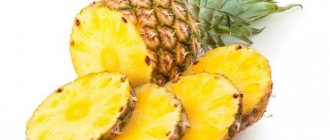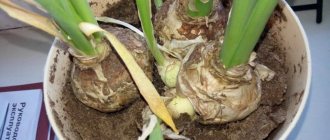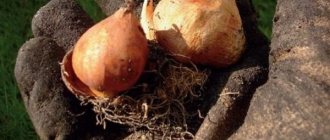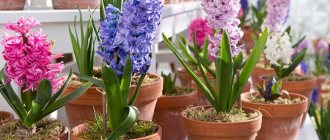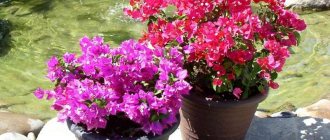Petunia is a plant that can decorate not only a flower bed, but also a balcony, loggia, terrace or porch. The plant is valued for its long flowering period, a large number of bright flowers on the bush, as well as its ease of care. But, in order to successfully grow petunia from seeds at home, it is worth knowing some secrets.
Seed selection
The most important requirement for seed material is that it must be fresh. One of the main difficulties that a gardener may encounter is a low germination rate.
When choosing seeds, you should give preference to products from trusted manufacturers. Coated seeds must be sprouted in high-moisture soil to dissolve the coating.
When purchasing regular seeds, you should ask the seller about the conditions and shelf life.
A few words about sowing dates
Before you start sowing the seeds of this crop, you must decide what specific variety and type of seed you will work with. And if when choosing a variety you need to be based solely on personal preferences and the characteristics of the place where the flowers will grow in the future, then the choice of the type of seed is limited to only two forms of sale.
More specifically, petunia seeds are sold:
- in granules;
- in bulk.
Plain and pelleted petunia seeds
The advantage of granulated (pelled) seeds is that they are more convenient to sow. In addition, they have a higher germination rate, although the same can be said about the cost. But loose seeds will cost less, and you can determine by eye how high-quality the seed is.
Note! After selecting and purchasing seeds, it remains to decide when exactly is the best time to start sowing. This point is extremely important, but for some reason many beginners forget about it.
Selecting Petunia Seeds
As a rule, about two months pass between sowing and the formation of the first flowers. Therefore, if you plan to enjoy the colorful neighborhood of petunias in the spring, you must take care of everything in advance. But the sprouts of this crop are susceptible to spring colds, and therefore transplanting too early into open soil can simply cause the death of the seedlings.
Varieties Neon Rose and Black Velvet
Explorer
Varieties Mashenka and Svetlana
Variety Sonata and Priscilla
Petunia Multiflora
Other varieties of large-flowered petunias are also charming
Familiarize yourself with the generally accepted planting dates.
- If you can take care of daylighting of the plants, you can sow in the last days of February.
- If this is not possible, postpone it until mid-March. The reason is extremely simple: petunia seedlings “like” light with a certain wavelength, and in February this light is clearly not enough.
Timing of ripening and planting of seedlings of popular crops (including petunias)
Also, to obtain strong and high-quality seedlings, take the choice of containers and soil responsibly. Due to the fact that seeds germinate best under the greenhouse effect, give preference to wide containers that have an average depth (it is also important that they have a lid that allows sunlight to pass through). For example, transparent plastic containers for storing food are suitable for this. To get healthy shoots, be sure to monitor the quality of the soil mixture used. You can use packaged soil for indoor plants (this is sold in every specialty store) or, as an option, peat tablets (we’ll tell you more about the latter a little later).
Plastic food containers
Prices for peat tablets
peat tablets
If you wish, you can prepare the soil mixture yourself. To do this, mix lowland peat, soil (both turf and leaf) and humus in equal proportions. You can also add sand (approximately 1⁄2 part). Before filling the container, be sure to sift the soil mixture through a sieve.
Soil for seedlings
Note! It is recommended to place a drainage layer on the bottom of the container, which can be pebbles, expanded clay or small broken bricks. After this, air will freely flow to the root system, and such a nuisance as waterlogging of the soil will be prevented.
Prices for petunia seeds
petunia seeds
Container for planting
To grow petunias for seedlings, it is enough to use a small container up to 10 cm deep. There are ready-made cassette greenhouses on sale, but a plastic container for various products is also suitable. Before filling the soil, it is worth disinfecting the container with a weak solution of potassium permanganate and rinsing.
It is worth making holes in the bottom of the container for drainage. It is necessary to lay a layer of expanded clay on the bottom. The soil that will be used for growing seedlings must undergo heat treatment. For this purpose, place it in the microwave for a few minutes, or pour boiling water over it.
Do not fill the container completely with soil. It is necessary that the soil does not reach the edge of the container by 2 cm.
Popular questions and answers
We talked about growing petunias with agronomist-breeder Svetlana Mikhailova.
How long do petunia seeds remain viable?
High germination capacity of petunia seeds lasts 3–5 years. Then germination rate decreases, but some seeds still germinate. Therefore, you should not throw away old bags; there is still a chance to grow several plants.
What is minitunia?
Minitunias are varieties and hybrids of petunias with small flowers. And rightly so, they are compact in size. There are no differences in care between them and ordinary petunias.
What is supertunia?
Supertunia is a variety series of petunias created by Japanese. They have long hanging shoots that can reach a length of 2 m and quite large flowers with a diameter of 5–9 cm.
Sowing seeds correctly
Petunia seeds germinate only in the presence of light. If they are buried in the soil, or sprinkled even with a very thin layer, they will die.
It is best to put snow in a container and sow petunia directly into this layer. The snow will gradually melt, and eventually the seeds will end up in the substrate. If snow is not available, then the grains are placed on the surface of the substrate and watered with a spray bottle. This must be done carefully so that the seeds do not end up inside the soil. The box with seedlings must be covered with film. The container is placed in a warm (at least 25 ° C) and bright place.
To germinate coated seeds, it is best to use individual tablets. First of all, the tablets are placed in water and waited until they are soaked. After this, they are taken out of the water and placed in a container with high sides. One grain is placed in each tablet. For this purpose, use a toothpick or match. Water is dripped onto the surface of the seeds (using a pipette). The shell will soften and will need to be removed. The sprout will begin to develop faster. After sowing, the containers are covered with cling film or glass.
10 shade-tolerant flowers to decorate “dark” corners of the site
Growing petunia in tablets has a higher germination rate. The tablets are also easy to care for and replant.
We sow in a common container: in the snow
Distributing microscopic seeds one after another is a tedious task, so various tricks are used to make the process easier and faster. The most common one is to use snow.
The soil is placed in the container in the same way as in the previous (classical) planting method. Then clean snow is laid out on top in a continuous layer (1.5-2 cm thick) over the entire surface, after which the seeds are carefully scattered over the snow, trying to do it as evenly as possible. Dark dots are clearly visible on a white background, and if desired, they can be redistributed over the surface using a toothpick. The snow is then allowed to melt and the seed appears on the ground as required.
Sowing in the snow
When using this method, the container must have drainage holes so that after the snow melts, excess moisture can drain.
The planting material is sufficiently moistened, so no additional spraying is needed. The container is covered with a lid, glass or film and placed in a warm place.
Conditions for growing seedlings
Petunia seeds germinate only at a temperature of +24-25 °C. Hybrid varieties that are particularly sensitive to temperature. If the temperature is below normal, the grains simply will not sprout, and at higher temperatures, young plants will begin to stretch out and get sick.
Seeds germinate on the sixth or seventh day after germination, if they are provided with temperature conditions and proper lighting.
After germination, seedlings need regular ventilation twice a day. First, the film is removed for 20 minutes, on the second day - 40. Every day the time is increased, and the temperature is reduced to + 20 ° C during the day, and to + 16 ° C at night. This will prevent the sprouts from stretching too much.
The first days after germination, the plant’s root system actively develops. Shoots and leaves will begin to grow much later.
Illumination of growing plants
For normal development, a young plant needs round-the-clock lighting. This technique will speed up the growth and appearance of the first buds. Petunias grown under such conditions are more resistant to disease.
Daylight hours should be at least 12 hours. The illumination level is 50,000 lux. As a rule, the lamp is turned on early in the morning, at about seven in the morning, and turned off no earlier than ten in the evening. After picking, the illumination level is increased to 55,000 lux.
For this purpose, it is best to use a special phytolamp. But a gas-charging lamp, LED or fluorescent lamp is also suitable. The distance between the lamp and the seedlings should be 20 cm.
Tulips after flowering: 6 useful tips to save the bulbs
Deciding when to sow in order to achieve flowering in the right month: April, May, June, July
Petunia seedlings, as a rule, are planted already flowering, which is due to the peculiarities of the growing season of this crop: from sowing to planting, as already mentioned, approximately 3 months pass, and less - about 2.5 months until the flowers appear (the first buds may appear even earlier, especially if the variety is early). So it turns out that young plants often bloom even before they are transplanted to a permanent place.
Therefore, if you need to get flowering bushes by a certain date, then subtract 2.5 - 3 months from it.
It turns out:
- To achieve flowering in mid-April, you need to sow in mid-late January (mandatory long-term additional lighting will be required)
- To achieve flowering in mid-May, you need to sow in mid-late February (at first you will need additional lighting)
- To achieve flowering in mid-June, you need to sow in mid-late March
- To achieve flowering in mid-July, you need to sow in mid-late April
We organize watering
Petunia seedlings prefer to grow in conditions of moderate humidity. Too wet soil promotes the development of fungal infections, and a lack of moisture will lead to the death of young and fragile plants.
It is best to use drip irrigation. A syringe is used for this purpose. With its help, water is supplied directly to the root of the plant. Do not allow liquid to get on the surface of the leaves. You can also pour water into a tray or onto the wall of a container.
Soft, settled water without chlorine is suitable for irrigation. It should be at room temperature. You can also add a small amount of lemon juice to the watering liquid.
It is best to water the seedlings in the evening.
Preparing the soil
Any high-quality commercial soil for seedlings or universal soil is suitable for planting petunias. In this regard, the plant, fortunately, is not overly capricious - the main thing is that the soil is loose, nutritious and can sufficiently retain moisture. The soil reaction should be neutral or slightly acidic.
If possible, the soil should be steamed (or calcined in the oven) for 40-60 minutes to prevent the seedlings from developing blacklegs.
Good soil is the key to success
Before pouring it into the container where planting will take place, all large foreign elements - roots, stones, lumps, etc. - are first removed from the soil. You can also sift it so that it has a uniform and loose structure. If possible, it is worth adding a little vermiculite.
It is also possible to independently prepare the soil mixture, although from the point of view of the ratio of results and labor costs, this option is not the most optimal. Nowadays, it is much easier to purchase ready-made soil for planting, especially since you only need a little of it at first. In general, we present the composition and proportions for the mixture with your own hands, rather just in case: 1 part humus, 1 part leaf soil, 1 part turf soil, 1 part lowland peat, ½ part sand.
Selecting fertilizers
For the first two weeks, seedlings are treated with a weak solution of Pervikura potassium permanganate using a spray bottle. After the plant produces its fourth true leaf, the petunia is treated with fertilizers for foliar feeding. For this purpose, you can use Crystalon, Uniflora micro or others. Foliar feeding alternates with root feeding. Fertilizers should be applied two to three times a week.
Flower care
Care consists of:
- in timely watering;
- in systematic feeding;
- in the picking of withered flowers.
Petunia should be watered only in dry weather, preferably in the evening. The plant does not like excessive humidity and when water stagnates in the hole. It is enough to simply moisten the soil around the roots a little. The next day, the ground is loosened so that a crust does not form, and the weeds are removed.
The beauty and duration of the flowering period of petunia depends on regular feeding. After 10 days, the plant is fertilized for the first time. Use nitrogen-containing fertilizers. Nitroammophoska has proven itself well.
During the formation of buds, potassium salt and superphosphate are used. You can use wood ash from a fire. If the leaves begin to turn yellow and fall off, the plant may have developed chlorosis. This means he lacks iron. In this case, Ferovit will help. They spray petunia 3-5 times with a period of three days.
Flowers that have bloomed are removed. This pushes the plant to form new buds and prolongs flowering. Using the pinching procedure, the bush is given a beautiful shape.
You can make a bush in the form of an unusual flower ball with many blossoming buds.
Picking
This step is not necessary if young plants grow in cassette containers or tablets. The root system of petunia is very branched, and picking cannot be avoided during group plantings.
Picking is done after the appearance of the second or third pair of leaves. Each specimen, along with a lump of earth, is carefully transferred into a glass or container with a volume of at least 200 ml. All voids in the container must be filled with soil. After transplanting, the seedlings are watered and soil is added if necessary. The dishes must have drainage holes.
During this period, the plant needs shading from sunlight and a lower temperature (can be reduced by 4 °C). This will avoid pulling. This regime must be followed for at least a week.
Secrets to successfully growing petunias
- Petunias are sown in the second half of February or early March. You can sow in several stages, starting in January. Then the petunia bushes will begin to bloom gradually.
- To grow petunia seedlings, you can use a universal soil mixture.
- In February and March, seedlings need additional lighting.
- If the seedlings have sprouted thickly, they need to be thinned out.
- It is very important to ensure that the required level of humidity is maintained. Overwatering leads to the development of a fungus called blackleg (a black area on the stem near the base). Plants that turn white are destroyed.
- Fungicides and growth stimulants are often added to the irrigation liquid. This helps prevent disease and accelerate development.
- After picking, the plants begin to be fed only after 7-10 days.
- If the petunia variety is characterized by strong growth, then after the 5th leaf appears, the top of the plant is pinched. Sometimes they make several pinches as the bush grows.
- If the plant lacks iron, chlorosis may develop. For prevention, special iron-containing preparations for plants are added to the soil substrate.
- Before planting young plants in open ground, hardening is carried out. The boxes with seedlings are gradually taken out into the air, constantly increasing the time.
- Petunia bushes are planted in the flowerbed late in the evening or in cloudy weather.
- When purchasing ready-made seedlings at retail outlets, you need to check that there are no yellowed or dry parts on the bushes. The substrate should be moderately moist. There should be no insects on the underside of the leaves.
Buddha's favorite flower in a garden pond - 5 useful tips for growing lotus in garden ponds
Petunia is a beautiful and colorful plant. In order for seedling growth to be successful, the plant must be provided with appropriate levels of light, temperature and humidity in its earliest stages. For better development of the root system, boxes with seedlings can be placed on a heating radiator. Also, do not neglect fertilizing. As the volume of green mass increases, the amount of fertilizer should be increased. If the need arises, the growth of petunia can be slowed down. To do this, lower the temperature slightly.
We choose the timing of when to plant petunia seedlings in different regions
It is important to understand when planting time is in your region. For different climatic conditions, the optimal periods will be quite different.
Middle zone (Moscow region)
The most suitable time throughout the middle zone will be:
February March
Southern regions
Here you can start planting earlier. It is perfectly acceptable to sow:
from the second half of January
North-West, Urals, Siberia, Far East
In these regions, the timing is quite extended and depends on additional lighting when growing seedlings (more on this later) and the location of further planting of seedlings. In general, it is better not to rush and plant during the following period:
end of February – beginning of April

